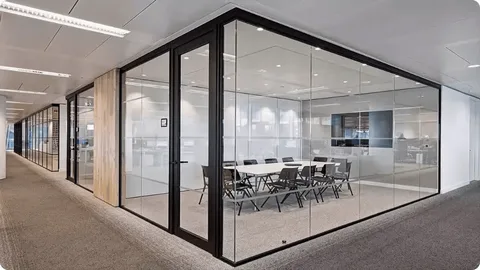Bathroom leaks cause more damage than most people realize. One tiny crack or improper seal, and moisture starts its silent attack. But this issue can be tackled by knowing how to waterproof a bathroom in dubai correctly. Whether it’s during a full renovation or just an upgrade, getting waterproofing right is the key to a long-lasting, mold-free bathroom.
Style Works understands the importance of moisture control. Here’s a look at five trusted, effective methods of bathroom waterproofing, along with practical advice that can solve real-life problems people face every day.
1. Use a High-Quality Waterproofing Membrane for Bathroom Floors
Why Membranes Matter
A waterproofing membrane for bathroom floor acts like a protective barrier, sealing the surface beneath the tiles and preventing water from soaking into the subfloor. This stops mold growth and structural damage.
Common Mistakes to Avoid
- Skipping primer before applying the membrane
- Using cheap or low-quality products
- Not allowing sufficient curing time
Pro Tip That Works
Apply the membrane in two coats. First horizontally, then vertically. It ensures even coverage. Many professionals, especially those who rely on waterproofing a bathroom Bunnings style, swear by this technique.
Style Works recommends investing in flexible membranes that handle expansion and contraction without cracking.
2. Seal Bathroom Walls with Waterproof Coating
How to Waterproof a Bathroom Wall Correctly
Tiles alone don’t protect against water. The wall behind them needs a proper sealant. This is where a waterproof wall coating or sheet membrane makes all the difference.
Key Areas to Focus
- Behind the shower or bath
- Around sinks and vanities
- Any wall exposed to moisture frequently
Bonus Tip
Use a waterproof liquid for bathroom walls, especially around fixtures. These liquids penetrate the pores of the material and offer a seamless finish. It’s quicker to apply and gives long-lasting results.
Style Works highlights that many bathroom problems begin behind the walls, not on the surface.
3. Don’t Forget the Bathroom Subfloor
How to Waterproof Subfloor in Bathroom Renovations
The subfloor is like the foundation of a house. If it’s weak, the entire structure suffers. That’s why waterproofing the subfloor is critical during bathroom renovation waterproofing.
Subfloor Waterproofing Checklist:
- Patch and level the subfloor before waterproofing
- Apply primer before any membrane
- Overlap edges of membranes to avoid leaks
Real Experience Tip
For wooden subfloors, always go with a flexible membrane or sheet. It accommodates movement without cracking. Many builders rely on bathroom waterproofing systems that cater to wooden and concrete subfloors differently. Style Works recommends not cutting corners here.
4. Tile the Right Way: Grouting and Sealing
How to Waterproof Bathroom Tiles Efficiently
Tiles are often believed to be waterproof, but the grout lines between them aren’t. This is a common area where leaks begin.
What to Do:
- Use epoxy grout for better water resistance
- Seal grout lines every 6-12 months
- Use silicon sealant in corners instead of grout
Tip That Lasts
Before placing tiles, make sure the surface underneath is waterproofed. No shortcut here. For a solid finish, follow tips on how to waterproof a bathroom tiles and ensure every layer is protected.
Style Works always emphasizes grout maintenance. Even the best tile job fails without it.
5. Address Ceilings and Showers for Full Coverage
How to Waterproof a Bathroom Ceiling
Most people ignore the ceiling. Steam from hot showers can build up, condense, and seep into the drywall, causing mildew.
Solution
- Use mold-resistant paint
- Apply a waterproof liquid for bathroom ceilings
- Ensure proper ventilation
How to Waterproof a Bathroom Shower
Showers are the wettest part of any bathroom. Here’s what works:
- Pre-slope the floor to avoid water pooling
- Use waterproof membranes behind wall tiles
- Apply sealant at all corners
Don’t forget to use a proper drain system that integrates with your membrane. This small step prevents massive future issues. Style Works prioritizes this in every shower install.
Extra Consideration: Full Room Waterproofing
How to Waterproof a Room When Converting It to a Bathroom
Transforming a regular room into a bathroom requires full waterproofing of every surface.
Full Room Waterproofing Steps:
- Apply waterproof membrane on all walls, floors, and ceiling.
- Add a water-resistant barrier under the subfloor.
- Use moisture-resistant backer boards.
Following these steps prevents long-term damage and guarantees a safe bathroom environment.
Style Works suggests treating the entire room like a wet zone if in doubt.
Maintenance Tips That Keep Everything in Check
Long-Term Bathroom Waterproofing Success
- Inspect caulking and seals every 6 months
- Reapply sealants regularly
- Watch for early signs of mold or mildew
Avoid These Common Mistakes
- Relying only on tiles
- Skipping professional help when needed
- Mixing incompatible waterproofing products
Style Works has seen many bathroom renovations go wrong due to these errors.
Final Thoughts: Make Waterproofing a Priority
Knowing how to waterproof a bathroom isn’t just about using the right products. It’s about using the right approach, at the right time, in the right areas. From how to waterproof bathroom tiles to securing the subfloor and ceiling, every part plays a role.
The team at Style Works believes that smart waterproofing saves time, money, and stress in the long run. By focusing on these five strategies, bathrooms stay beautiful, functional, and damage-free for years.
If there’s one thing that matters most in bathroom design, it’s not just how it looks, but how it lasts. And that starts with proper waterproofing.

